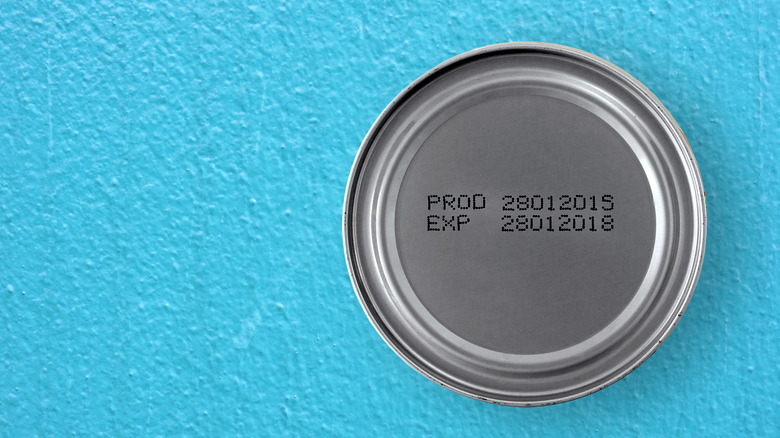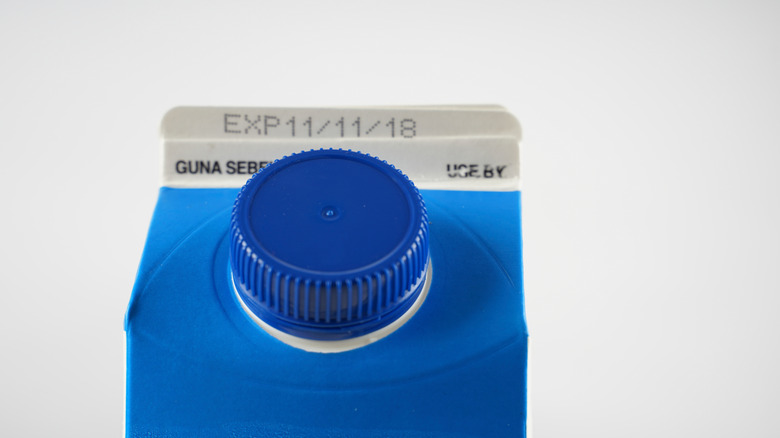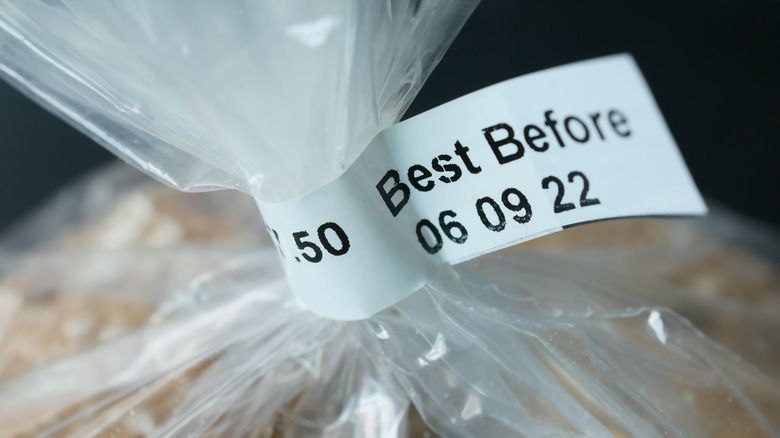Open Vs Closed Expiration Dates: How To Read Your Food Packaging
It doesn't take a genius to realize that eating expired food is a bad idea. We put a great deal of faith in expiration dates to protect us from these risks, but unfortunately, expiration labeling is such an incredibly confusing and convoluted business so you can't completely rely on them to tell you if you're food has gone bad or not. According to the U.S. Department of Agriculture, there are no federal regulations regarding food product dating (except in the case of baby formula), which means that companies are free to slap pretty much any date they want on their products.
Because the government imposes no standards for expiration dates, different products use completely different labeling systems (and some don't use any at all). The two main types of expiration labeling are open dating and closed dating. You're probably most familiar with open dating, wherein products are stamped with a date that is meant to help consumers determine a product's quality. Closed dating is a much different system that isn't even meant for consumers to follow. Confusing closed dates with open dates can lead you to eat expired items or waste perfectly good ones, so it's critical that you know the difference.
Most packaged foods use open dating
Anytime you see a food item labeled "Best-By," "Use-By," or "Sell-By," that's an example of open dating. It is used for most foods, especially perishable items such as meat, eggs, and dairy. While many people assume that the dates on expiration labels indicate the day on which a given food product will become unsafe to eat, that's not actually the case. Open dating is supposed to tell you when a product is at peak quality.
Food manufacturers can format open-date labels however they'd like, but there are a few common terms that you're most likely to see. The words "Best if Used By," "Use-By," "Best Before," and "Freeze-By" are all supposed to indicate the last day that a product is at peak quality. The term "Sell-By" indicates how long a grocery store should keep the product in stock.
Closed dating, also known as coded dating, is used for shelf-stable items such as canned goods. They don't say the date that the food supposedly expires, but rather the date the food was made. Closed dating typically uses an MMDDYY format, so if the label says 123123, it means the product was packaged on December 31, 2023. Closed-dated labels also include a tracking code used by the manufacturer to check their stocks. All-in-all, closed dating isn't meant to help the consumer, but rather the producers of food, and it generally isn't a good indicator of when a food might expire. Then again, open dating isn't much better.
Don't put too much faith in expiration dates
Closed dating may not be of much help to the consumer, but it does what it's intended to do: help the producer. The same can't be said of open dating. Expiration dating in general is a flawed practice. With no government oversight to establish consistency, food manufacturers use their own judgment to determine expiration dates. The only reason we have these labels in the first place is to reassure customers.
Smithsonian Magazine explains that expiration labels didn't become standard practice until the 1970s. At that time, processed foods were on the rise, and more Americans were relying on groceries for their sustenance. However, this brought new concerns over the safety of foods sold in stores, and people started calling for an expiration dating system to be established. Food manufacturers complied, but it's important to note that expiration dates are not chosen with the consumer's health as the priority; the main focus is reassuring the consumer and protecting the brand.
Manufacturers air on the conservative side when estimating expiration dates, so much so that the printed date is often weeks ahead of when the food might actually spoil. Unfortunately, this leads to a great deal of food waste. According to ReFed nearly 10% of America's food waste is the result of confusing and misconstrued expiration dates. To avoid unnecessarily throwing out perfectly good food and adding to that problem, consumers should use the most reliable tools they have to determine if food has expired: their eyes and nose.


